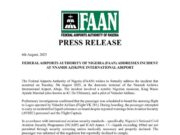SAMSON TOROMADE
Nigeria’s malaria strategy depends heavily on foreign funding but local organisations are doing the legwork.
An estimated 241 million malaria cases and 627,000 deaths were recorded globally in 2020, according to the World Health Organisation’s World Malaria Report 2021.
Nigeria performed the worst on both counts, recording the highest percentage of cases (27%) and deaths (31.9%) than anywhere else across the entire world.
The country is estimated to have recorded 64.7 million malaria cases, and 199,689 deaths. A majority of those affected were children under the age of 5.
Malaria, a disease caused by a parasite that is transmitted by infected mosquitoes, is preventable and treatable, but it has become so endemic in Nigeria that it is regarded as a way of life, hence not treated with as much alarm needed to reduce severe incidents that can lead to death.
A great number of Nigerians are very likely to self-diagnose and self-medicate when they notice the tell-tale symptoms of malaria, and this can complicate efforts to effectively combat its prevalence.
When the Society for Family Health (SFH) started its malaria intervention in 2003, its immediate concern was for people to have easy access to treatment options, and prevent severe cases and deaths.
The NGO, founded in 1983, quickly commenced with the provision of pre-packaged treatment for vulnerable groups, a project supported by the United States Agency for International Development (USAID).
The project involved distributing commodities to the private sector, especially Patent and Proprietary Medicine Vendors (PPMVs) who usually are the first point of contact in local communities.
Vendors were trained and provided with quality malaria treatment and diagnostic knowledge.
Community pharmacists, and private clinics were also trained and provided with Artemisinin-based Combination Therapies (ACTs), rapid diagnostic test kits, microscopes, job aids, and behaviour change communication materials to better render quality services.
























